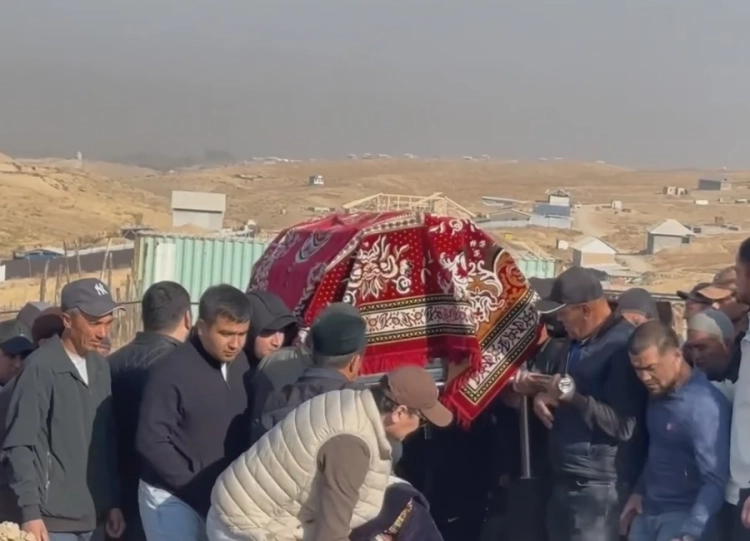The Most Famous Manaschi
The modern storyteller Shapak Urysmendiev was born in 1863 in what is now the Chuy region, in a family of farmers.
In his childhood, he began working in agriculture and later lived off the income from it. The profession of a singer was a side endeavor for him as a lover of the art. Shapak did not receive formal education but can read.
He became a true storyteller only as an adult, although he had known and performed separate excerpts from the epic before that.
He explains the beginning of his storytelling activity by stating that at the age of 26, he saw Manas in a dream. From the biography of the storyteller, it is evident that he began to sing after spending several years with the storyteller Naimanbai, and before that, he listened to performances of "Manas" in excerpts from the storyteller Balık, his son Naimanbai, Akylbek, Sagymbay, and others. Shapak does not perform the entire trilogy. He is the storyteller of "Semetey" and "Seitek," but he also performs excerpts from "Manas."
A well-known singer and semeteychi is Moldobasan Musulmankulov, a national artist of Kyrgyzstan, a laureate of awards.
He was born in 1881 in what is now the Ak-Tal region. He spent his youth in a poor farming family, then separated and began to live off the income from his profession as a singer.
Moldobasan became known as a singer with a beautiful voice from the age of 17. He learned to play the komuz well and, in addition, was a harmonist, attending weddings, feasts, and other celebrations, traveling far beyond the borders of Tian Shan, where he performed his repertoire, mainly consisting of lyrical songs.
By the age of 25, Moldobasan began to sing "Semetey." His teacher was the semeteychi Kaligul from Togolok Moldo.
Moldobasan is a remarkable figure in Kyrgyz folklore. His performances have recorded songs about Semetey and several excerpts from "Manas." In addition, he recorded epic poems "Kedeykan," "Janysh-Bayish," "Kurmanbek," and many folk songs. A number of folk melodies are also recorded in his performances. (M. Musulmankulov died in 1961 in Frunze).
Janybay Kodzhekov was born in 1869 in what is now the Jumgal region, from where he moved to the present-day Toktogul region, where he lived, engaging in farming. He did not receive any formal education and was semi-literate. He died in 1942.
Janybay was not a professional singer and lived off the income from farming. However, it is characteristic that both his father, grandfather, and great-grandfather were storytellers. He himself, according to his statement, listened to, or rather studied "Manas" only from his father and grandfather.
Janybay was also a semeteychi and did not sing the trilogy in full. Excerpts from "Semetey" are recorded in his performances.
Akmad Rysmendiev was born in 1891 in what is now the Chuy region. He spent his entire life until the revolution in farming. After the revolution, he was a member of a collective farm, then a worker in a state farm, from where he moved to the Kyrgyz Philharmonic.
Rysmendiev was not a professional singer and only occasionally performed "Semetey" at the invitation of certain individuals. He studied with the storyteller Sagymbay, with whom he communicated closely and listened to "Manas" from him. Excerpts from "Manas" and "Semetey" are recorded in Rysmendiev's performances. (Akmad Rysmendiev died in 1966 in the state farm "Shamshy" in the Chuy region).
Ibryaim Abdyraxmanov was born in 1888 in the Jety-Oguz region of the Issyk-Kul region. He is known as a remarkable figure in all versions of the epic "Manas," but he was not considered either a singer or a storyteller. Being deeply fascinated by "Manas," he never missed an opportunity to listen to storytellers, trying to memorize the text, sometimes attempting to learn separate excerpts by heart. He was the first recorder of "Manas" in the performance of the great akyn Sagymbay Orozbakov. From 1922 to 1926, he was constantly with Sagymbay and recorded 250 thousand lines of poetry from "Manas." Later, he recorded "Manas" from Sayakbay Karalaev, Togolok Moldo, Akmat, and others. In addition, he recorded many other works of folklore.
As a result of his long-term, meticulous work, Abdyraxmanov excellently studied Kyrgyz folklore, especially "Manas." Thus, in his person, we have a unique recorder.
Togolok Moldo and Sayakbay Karalaev






































